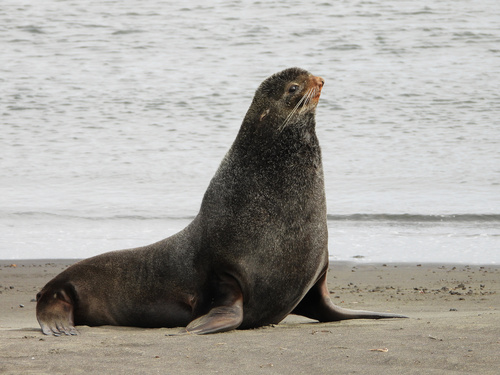
Northern Fur Seal
The northern fur seal, with its luxurious fur and playful demeanor, thrives in the North Pacific. A master diver and social creature, it forms vibrant colonies on rugged shores. Its thick coat and whiskers are both its charm and survival tools, making it a marine marvel.
18-27 years
Lifespan
59.0 - 299.4 kg
Weight
Length: 1.524 - 3.048 m; Height: 30 cm
Size
Brown, Grey, Chestnut
Color
4-6 years
Age of Sexual Maturity
4 months
Age of Weaning
14 mph
Top Speed
Vulnerable
Conservation Status
Decreasing
Population Trend
Characteristics
The northern fur seal (Callorhinus ursinus) is known for its thick fur, long whiskers, and large flippers. It inhabits the North Pacific Ocean, breeding on rocky islands. These seals are highly social, forming large colonies during mating season, and are adept swimmers, often diving deep for fish and squid.
Distribution Range of the Northern Fur Seal
The northern fur seal (Callorhinus ursinus) is native to the North Pacific Ocean. Its geographical distribution includes regions such as the Bering Sea, Sea of Okhotsk, and the North Pacific Ocean, extending from Japan to the west coast of North America. Major breeding colonies are found on the Pribilof Islands in Alaska, as well as on the Commander Islands in Russia.
Northern Fur Seal's Habitat
Environmental Conditions
Northern fur seals typically inhabit cold, temperate marine environments. They are found in pelagic waters but come ashore for breeding and molting. The climate in these regions is characterized by cold temperatures, with sea ice present in some areas during winter months.
Ecological Niche
Northern fur seals are marine mammals that spend the majority of their lives at sea, diving to feed on fish and squid. They play an important role in the marine ecosystem as both predators and prey. Their pelagic lifestyle and ability to dive to significant depths allow them to exploit a variety of marine resources. During the breeding season, they exhibit highly social behavior, forming large colonies on isolated islands.
Copyright @ Nature Style Limited. All Rights Reserved.
 English
English